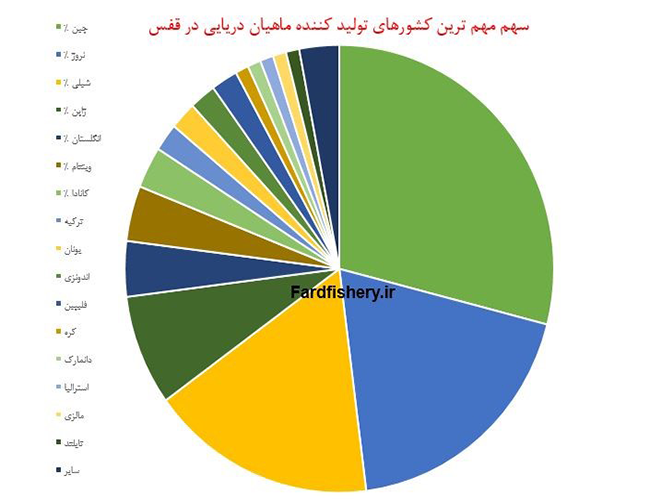Cage fish farming
Introduction
Our world is faced with three major challenges, namely lack of fresh water, food shortages and environmental degradation. Tens of thousands of people die every day due to food shortages, and the number of deaths from food shortages is increasing as the population grows. To meet this great challenge, human beings need to adopt new ways to increase food production. While red meat and agricultural production faces some limitations, instead, the seas, which occupy nearly 75 percent of the Earth’s surface, have potential for the production of food available to human society.
Increasing population growth, food resource constraints, and declining catches of some marine species worldwide, the priority of using fresh water resources for drinking and agriculture has made the general aquaculture countries in recent years towards marine aquaculture, especially fish farming. The sea has moved. High production capacity due to sea level, high self-purification power in marine environments, good ventilation and water displacement in rearing environment, no need for oxygenation, reduction of depreciation and maintenance costs, use of natural environments, suitable breeding conditions Among the benefits to producing valuable fish are the benefits that have encouraged us to use fisheries in marine cages.
Global status of aquaculture and fish farming in cages
According to the Food and Agriculture Organization (FAO), the global catch of fish has reached such a level that it is unlikely that more current stock management practices can be expected. On the other hand, demand for fish and other seafood is on the rise. Over the past two decades, aquaculture with the annual growth rate of about eight percent has had the fastest and most stable growth rate in animal protein production in the world.
In 2014, production of farmed aquaculture reached 100 million tonnes, 60 million tonnes of marine and saline marine and 40 million tonnes of freshwater. Of the 60 million tonnes of marine aquaculture, 25 million tonnes are aquaculture, including six million tonnes of marine fish. China alone accounts for more than half of the aquaculture production, and after China, countries such as Indonesia, India, Vietnam, the Philippines, Norway and Japan are among the largest producers of aquaculture. Iran ranks 19th among aquaculture producers in 2014. According to the latest statistics, 62 countries in the world are engaged in fish farming, with fish production in freshwater and offshore cages in recent years (statistics from 25 countries) reaching more than three and a half million tons. Atlantic salmon, tuna, shank and wire species, grouper, tilapia, and salmon are among the fish that contribute the most.
As shown in the picture above, the largest share of farmed fish in the cage goes to ocean salmon, rainbow trout, Yellowfin tuna and catfish. Today, countries such as China, Norway, Chile, Japan, and the United Kingdom are known as cages for saltwater fish (saltwater and freshwater).
History of fish farming in cages in Iran
Cage fish farming has been one of the country’s aquaculture development capacities for the last two decades, and given the country’s general and climatic conditions, some natural and man-made facilities still remain untouched. Development is at stake. During the seventies the establishment of small cages in aquatic environments such as the lake behind dams, lakes and rivers represented a small corner of the development of cage fishery development capacity, in 2013 by 45 active cage farms in In 12 provinces, more than 1245 tons of salmon were produced. Cage rearing was also noted in the late seventies and early eighties. The visit of the then Minister of Agriculture and Fisheries of Iran at that time to some countries such as Norway and observing the development of cage fishery in this country was a turning point in the decision to develop cage fishery, one of the outcomes of which was conducting preliminary field studies and Preliminary assessments of the possibility of developing fish farming in the Caspian Sea and southern waters of the country.



